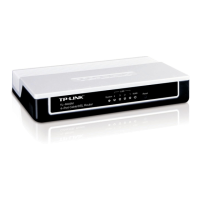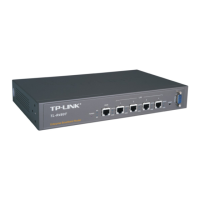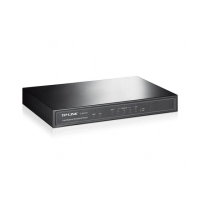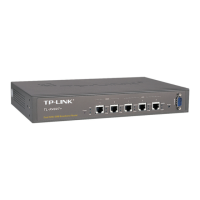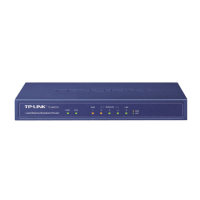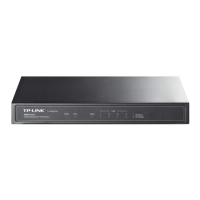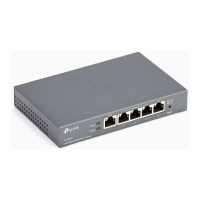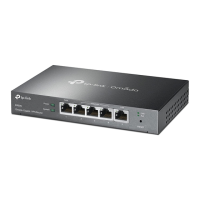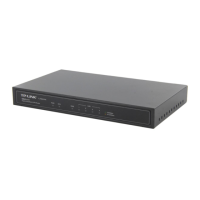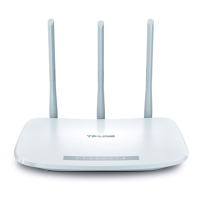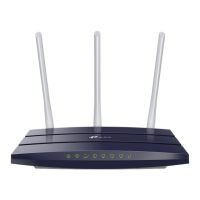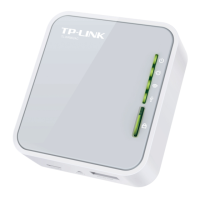Do you have a question about the TP-Link TL-R860 and is the answer not in the manual?
Details compliance with FCC rules for Class B digital devices, providing reasonable protection against harmful interference.
Provides cautions for usage near water and during electrical storms, highlighting risks of electric shock.
Outlines the procedure for physically connecting the router to the network and power supply.
Explains how to configure TCP/IP settings on PCs, either manually or automatically, for network access.
Guides users through the initial setup process, including WAN connection type selection and basic parameters.
How to configure IP parameters for the Local Area Network (LAN), including IP address and Subnet Mask.
Steps to configure the Wide Area Network (WAN) connection type (PPPoE, Dynamic IP, Static IP) and parameters.
Options to enable/disable the DHCP server and configure IP address pools, lease times, and gateways.
Sets up internal servers to be accessible from the Internet by mapping external ports to internal IPs.
Controls the main firewall switch and default filtering rules for IP and MAC address filtering.
Restricts network access based on IP addresses, defining effective times and protocols.
Blocks access to specific websites by domain name or keywords, with effective time settings.
Controls network access based on device MAC addresses, allowing or denying access.
Protects against DoS attacks like SYN Flood, UDP Flood, and ICMP-Flood by setting packet thresholds.
Details compliance with FCC rules for Class B digital devices, providing reasonable protection against harmful interference.
Provides cautions for usage near water and during electrical storms, highlighting risks of electric shock.
Outlines the procedure for physically connecting the router to the network and power supply.
Explains how to configure TCP/IP settings on PCs, either manually or automatically, for network access.
Guides users through the initial setup process, including WAN connection type selection and basic parameters.
How to configure IP parameters for the Local Area Network (LAN), including IP address and Subnet Mask.
Steps to configure the Wide Area Network (WAN) connection type (PPPoE, Dynamic IP, Static IP) and parameters.
Options to enable/disable the DHCP server and configure IP address pools, lease times, and gateways.
Sets up internal servers to be accessible from the Internet by mapping external ports to internal IPs.
Controls the main firewall switch and default filtering rules for IP and MAC address filtering.
Restricts network access based on IP addresses, defining effective times and protocols.
Blocks access to specific websites by domain name or keywords, with effective time settings.
Controls network access based on device MAC addresses, allowing or denying access.
Protects against DoS attacks like SYN Flood, UDP Flood, and ICMP-Flood by setting packet thresholds.
| DHCP client | Yes |
|---|---|
| Supported network protocols | TCP/IP, ICMP, PPPoE, SNTP, PPTP, L2TP |
| Ethernet LAN (RJ-45) ports | 8 |
| Firewall security | Network address translation (NAT) firewall, Stateful packet inspection (SPI) firewall |
| Security algorithms | 802.1x RADIUS |
| Networking standards | IEEE 802.3, IEEE 802.3u |
| Ethernet LAN data rates | 10, 100 Mbit/s |
| Product color | Black, White |
| Rack mounting | No |
| Certification | FCC\\r CE |
| Storage temperature (T-T) | -40 - 70 °C |
| Operating temperature (T-T) | 0 - 40 °C |
| Storage relative humidity (H-H) | 5 - 90 % |
| Operating relative humidity (H-H) | 10 - 90 % |
| Power consumption (typical) | 5 W |
| Depth | 120 mm |
|---|---|
| Width | 174 mm |
| Height | 29 mm |
| Weight | 500 g |
